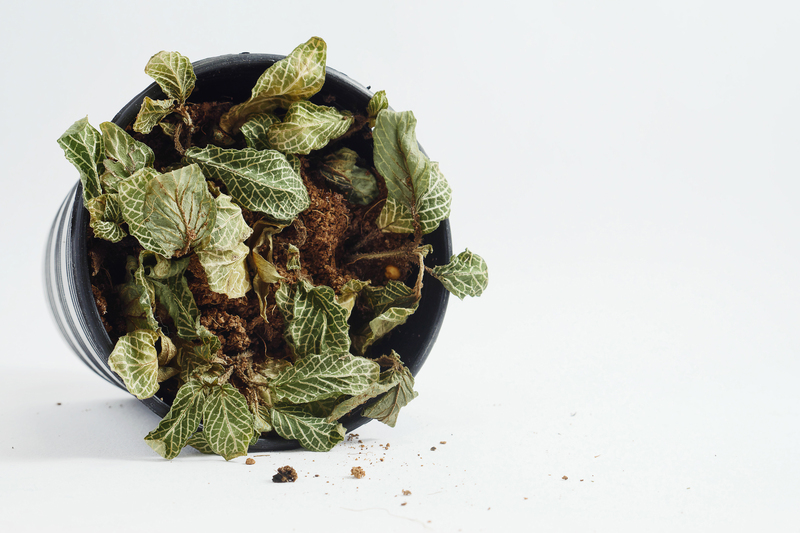Discover How Gardening Makes a Positive Impact on Climate Change
Posted on 08/06/2025
Discover How Gardening Makes a Positive Impact on Climate Change
Climate change is a pressing global issue, and while the planet faces increasing carbon emissions and rising temperatures, individuals everywhere are looking for actionable steps to create lasting change. Gardening for climate change is not only a rewarding hobby but also a powerful tool to help mitigate environmental damage. In this comprehensive guide, we'll explore how gardening helps fight climate change, the science behind it, practical ways to practice eco-friendly gardening, and tips for maximizing your climate impact right from your own backyard.

Understanding the Connection Between Gardening and Climate Change
The interplay between gardening and climate change mitigation is often underestimated. Gardens, whether large or small, work as micro-ecosystems that interact dynamically with the environment. They can help sequester carbon dioxide, reduce fossil fuel consumption, and promote biodiversity. But how exactly does this happen?
1. Carbon Sequestration Through Gardens
Plants absorb carbon dioxide (CO2) from the atmosphere during photosynthesis. By incorporating more plants into your habitat, you're directly contributing to lower atmospheric carbon levels. Trees, shrubs, and even your vegetable patch can all serve as carbon sinks, storing carbon in plant tissue and soil for years.
- Trees and shrubs store significant amounts of carbon above and below ground.
- Vegetable gardens sequester less, but can still make an impact through soil health.
- Perennials like berry bushes offer longer-term carbon storage than annuals.
2. Soil Health and Microbial Action
A healthy garden doesn't just benefit plants; it's also vital for soil carbon sequestration. Rich, organic soils, maintained through composting, crop rotation, and cover cropping, foster microbial activity. These microorganisms help lock carbon into the soil, preventing it from re-entering the atmosphere.
- Composting organic waste enhances soil carbon content.
- Reduced tillage preserves carbon stores and beneficial microbes.
- Mulching conserves moisture and builds organic-rich soil layers.
3. Reducing Food Miles Through Homegrown Produce
Often overlooked, growing your own food has measurable climate benefits. Commercial agriculture and food distribution typically involve significant fossil fuel consumption:
- Long-distance transport releases greenhouse gases.
- Packing and refrigeration further increase energy use.
- Consumer gardening cuts out most of these emissions, delivering fresh produce directly from soil to table.
Every tomato, lettuce, or apple you grow at home means one less that must endure industrial supply chains.
Practical Ways Gardening Fights Climate Change
Armed with an understanding of how gardens impact the environment, you might wonder: what gardening practices are best for tackling climate change?
Choose Native and Drought-Resistant Plants
Native and drought-tolerant species have naturally evolved for your regional climate and require less water, fertilizer, and maintenance. These plants generally:
- Conserve water resources.
- Require fewer chemical inputs (fertilizers, pesticides).
- Boost local biodiversity by supporting pollinators and wildlife.
Less resource input means fewer emissions from production and application of fertilizers, pesticides, and irrigation.
Adopt Organic and Sustainable Gardening Techniques
Switching from chemical-intensive gardening to organic practices makes a significant positive impact on the climate:
- Composting: Returns nutrients to the soil, reduces landfill waste (and the methane it creates).
- Crop rotation: Disrupts soil-borne pests and maintains soil fertility naturally.
- Mulching: Suppresses weeds and reduces moisture loss, cutting down on the need for synthetic herbicides and excess watering.
Protect and Restore Pollinators
Climate change has drastically impacted pollinator populations. Gardening for pollinators helps reverse this trend:
- Growing a variety of flowering plants, especially natives, supplies pollen and nectar.
- Creating "wild corners" with untidy, plant-dense spaces shelters bees, butterflies, and beetles.
- Avoid synthetic pesticides, which can devastate non-target insects.
*By safeguarding pollinators, you support the broader ecosystem's resilience to climate change.*
Rainwater Harvesting and Smart Irrigation
Water scarcity is one of the major challenges exacerbated by global warming. Efficient garden water management reduces reliance on municipal supplies and fossil fuels:
- Rain barrels collect and store water for garden use.
- Drip irrigation and soaker hoses deliver moisture directly to roots, minimizing evaporative losses.
- Mulching and ground cover decrease watering needs.
Maximize Your Garden's Climate Benefits
Want to be part of the climate solution? These eco-friendly gardening practices will maximize your environmental impact:
Plant More Perennials and Trees
Perennials and trees, with their deeper root systems and enduring presence, store more carbon than annual plants. Planting even a single fruit or shade tree not only reduces your carbon footprint, but also:
- Provides food and habitat for wildlife.
- Reduces heating and cooling costs by providing summer shade and windbreaks.
- Improves air quality by filtering dust and pollutants.
Support Urban Greening and Community Gardens
Not everyone has access to a backyard for gardening. Community gardens and urban greening projects are fantastic ways for city dwellers to improve climate outcomes:
- Turn vacant lots and rooftops into productive green spaces.
- Increase carbon sequestration in dense urban areas.
- Cool city "heat islands," lowering air conditioning energy use.
- Foster community engagement and environmental stewardship.
Reduce Chemical and Fossil Fuel Inputs
Every bag of synthetic fertilizer, every tank of gas for a mower, adds to your garden's carbon footprint. To reduce emissions:
- Switch to hand tools instead of gasoline-powered ones.
- Make your own compost instead of buying peat-based mixes (peat extraction releases large amounts of CO2).
- Practice integrated pest management instead of routine pesticide use.
The Science: Gardening's Quantifiable Impact on Climate
How Much Carbon Does Gardening Remove?
While a single home garden may seem insignificant, the cumulative effect can be profound. Studies estimate that urban forests and residential gardens can sequester up to five to ten tons of carbon per hectare annually. On a household scale:
- One mature tree can absorb up to 50 pounds of CO2 per year.
- Organic gardening and composting can offset 10-30% of a household's waste-related emissions.
- Replacing a turf grass lawn with a mixed-species garden increases carbon storage and biodiversity by over 25%.
The Ripple Impact: Gardens Inspire Broader Change
Residential gardening also creates a "ripple effect" by:
- Raising awareness of sustainable food production and climate issues.
- Encouraging neighbors and communities to embrace gardening for climate action.
- Supporting local economies through plant sales, native plant nurseries, and landscape professionals.
Gardening vs. Industrial Agriculture: Environmental Comparisons
Why is gardening so much more climate-friendly than industrial farming? The contrast lies in key environmental factors:
- Industrial agriculture relies heavily on monocultures, chemical fertilizers, pesticides, and fossil fuel-driven machinery--all major greenhouse gas sources.
- Home gardens tend toward polycultures, organic inputs, and human-scale labor, leading to healthier soils and fewer emissions.
- Gardening supports localized food production, drastically reducing the "food miles" associated with what we eat.
Key Takeaway:
By adopting even a small patch of edible or ornamental plants, you're helping shift the world away from destructive agricultural models toward a more sustainable food and habitat system.
Gardening: A Hopeful Climate Solution
As more people recognize the urgency of our climate crisis, the search for meaningful solutions grows. Gardening for climate mitigation empowers individuals, families, and communities to take tangible action right where they live.
- It's accessible to most people, regardless of age, background, or location.
- It synergizes with other sustainable behaviors (like composting, cycling, and energy conservation).
- It provides mental, physical, and social health benefits--making climate action enjoyable and rewarding.

Getting Started: Simple Steps to Create a Climate-Friendly Garden
Ready to join the movement? Here are a few actionable steps to help your garden make a difference:
- Start small--even container gardens or a few pots on a balcony matter.
- Prioritize native plants and diverse species.
- Compost kitchen scraps and yard waste.
- Avoid chemical pesticides and fertilizers.
- Let a part of your garden "go wild" for pollinators and wildlife.
- Share your successes and inspire your neighbors!
Conclusion: Your Garden, Your Climate Legacy
Gardening makes a positive impact on climate change by sequestering carbon, fostering biodiversity, reducing emissions, and demonstrating that everyone can play a role in protecting our planet. Every plant you nurture, every flower that feeds a bee, every compost heap you build--these actions ripple outward, inspiring hope and real change.
So grab a trowel, dig in, and cultivate both a brighter garden and a brighter future for Earth. Together, we can discover how gardening changes the climate for the better, one beautiful bloom at a time.
```
